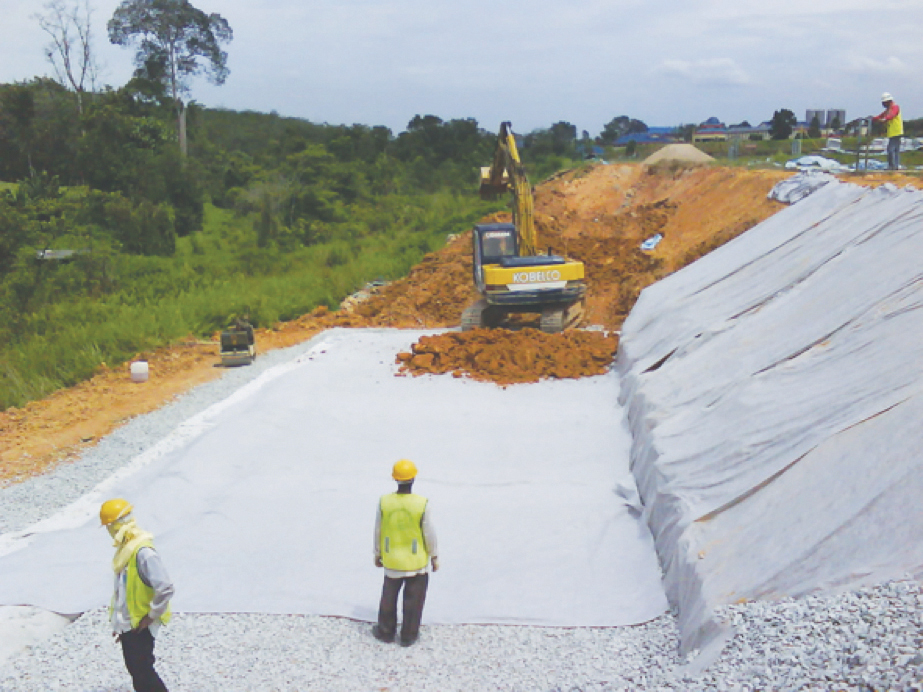Firstly, geotextile has good filtration performance. When placed in the dam structure, it allows
water to pass through while retaining soil particles and other fine materials.
This prevents the soil from being washed away by the seepage flow, maintaining the integrity
of the dam body and reducing the risk of internal erosion that could lead to seepage problems.

Secondly, certain types of geotextiles with impermeable or low-permeability properties can act as
a barrier to directly prevent the passage of water.
These geotextiles are often used in key areas of the dam, such as the upstream face or the
foundation, to form a continuous impervious layer. This layer effectively blocks the seepage path,
reducing the amount of water that can penetrate the dam and protecting the safety of the
dam structure.
In the construction process of using geotextile for dam seepage prevention, proper installation is crucial.
The geotextile needs to be accurately laid according to the design requirements, ensuring that
there are no gaps or folds that could compromise its seepage prevention effect.
Moreover, it should be well-connected with other components of the dam, such as the foundation and the surrounding soil, to form a complete seepage prevention system.
In conclusion, geotextile is a valuable material in dam seepage prevention, which helps to enhance
the safety and stability of the dam by effectively controlling seepage and protecting the dam
body from the harmful effects of water leakage.